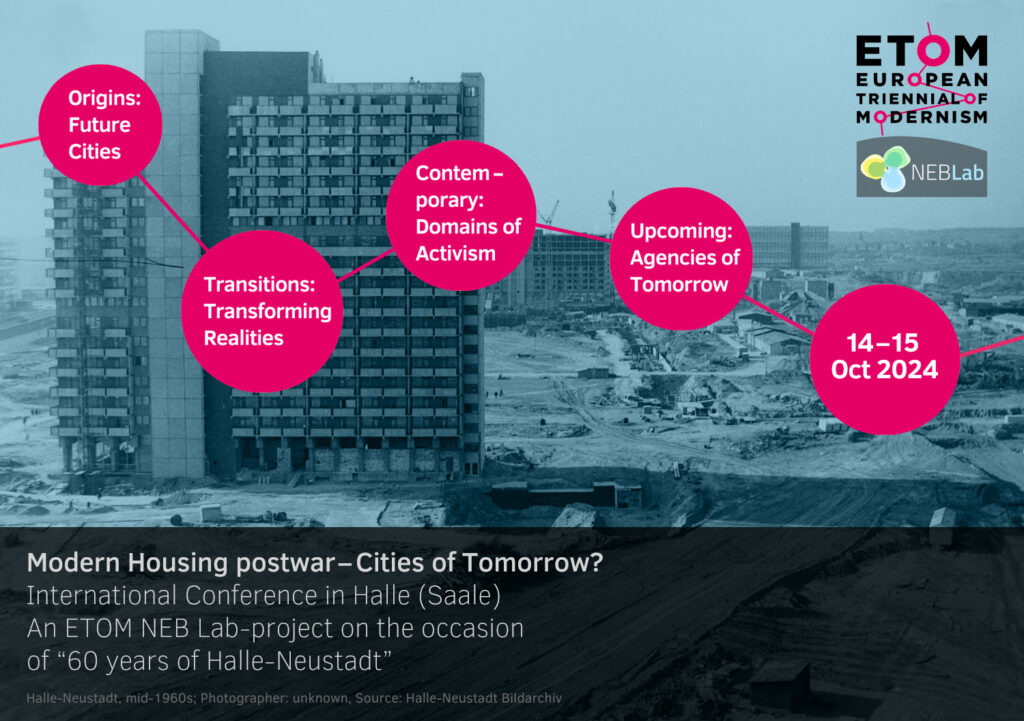Modern Housing postwar – Cities of Tomorrow?

14–15 Oct 2024
International Conference in Halle (Saale)
More information and registration: https://triennale-der-moderne.de/2022/60-years-halle-neustadt/
An European Triennial of Modernism (ETOM) NEB milestone project carried out as an “ETOM NEB-Lab” conference, within the framework of the “New European Bauhaus”, in the context of Central Europe, with a special focus on the exchange with Poland — In cooperation with the Federal Ministry for Housing, Urban Development and Building (BMWSB), the State of Saxony-Anhalt – Ministry for Infrastructure and Digital Affairs and the State Chancellery and Ministry for Culture, and the City of Halle (Saale).
Topic outline
Trans-European findings and approaches about the developments and perspectives of the transformation of urban design and large housing settlements of post-war Modernism, from the 20th to the 21st century, considering major development and policy goals: transformability of inhabited stock and modern heritage, resilience and sustainability of urban (re)development, infrastructure, energy and building materials, and social cohesion.
The development of housing settlements and urban planning of post-war modernism embodies a multi-layered transformation – in dealing with scarcity, newness, change, existing built fabric and future tasks – which is significant in the European context, especially in the Central European countries along the former Iron Curtain, in order to learn from the history of development and sustainably open up future perspectives.
The emergence of the residential quarters and cities of tomorrow followed the housing shortage after World War II and was based on the critical approach and innovation represented by modern housing construction of the interwar period. The upcoming genesis was driven by social and economic developments and the period of change after 1989, with phases of transition, decline, civil society activism, urban redevelopment, renovation, renewal, and as well preservation. This development from the turn of the millennium to present day shapes the form, perception, and function as a built environment and living space for millions of people. In every respect, the crucial examination is on current transformations, resilience, and future capabilities in the face of structural change, demographics, the climate crisis, housing shortages, and social challenges.

